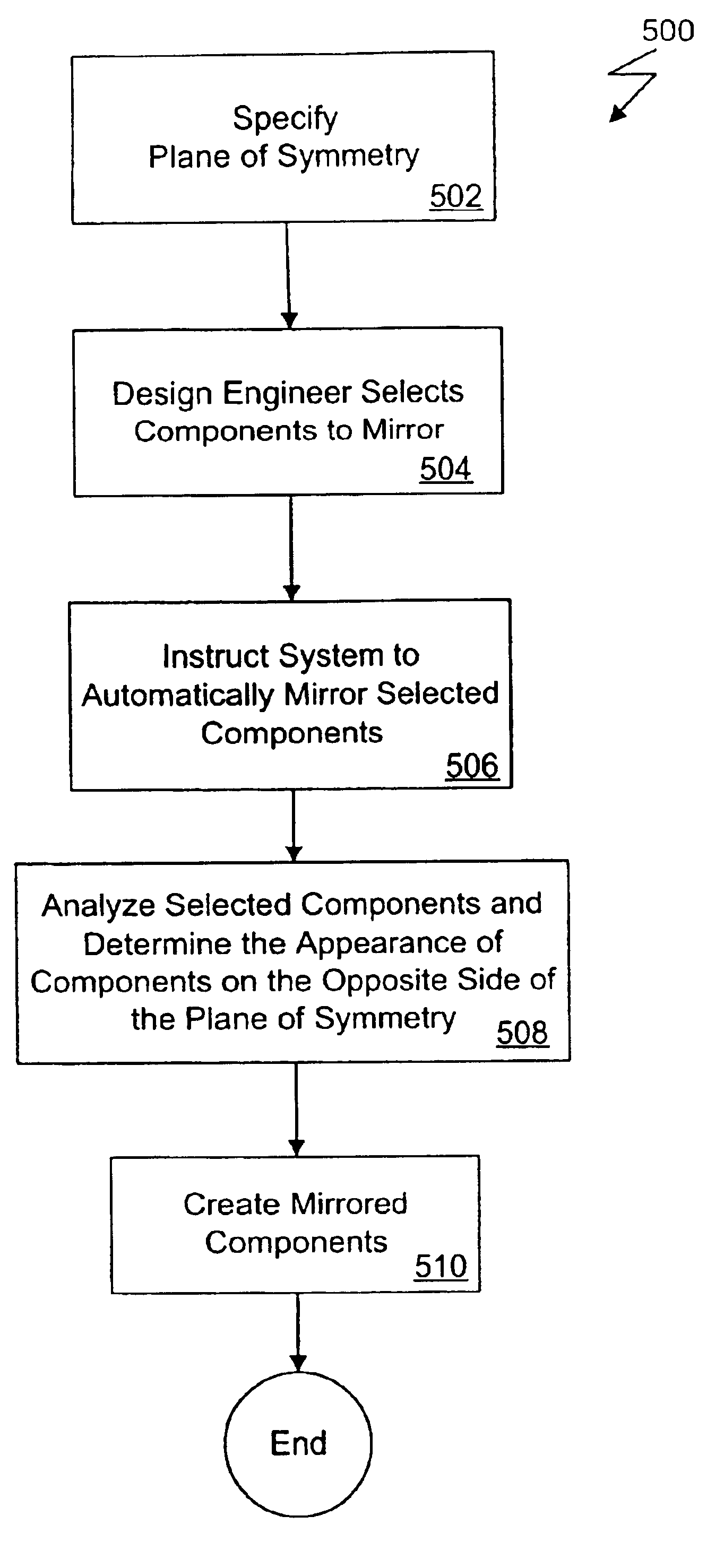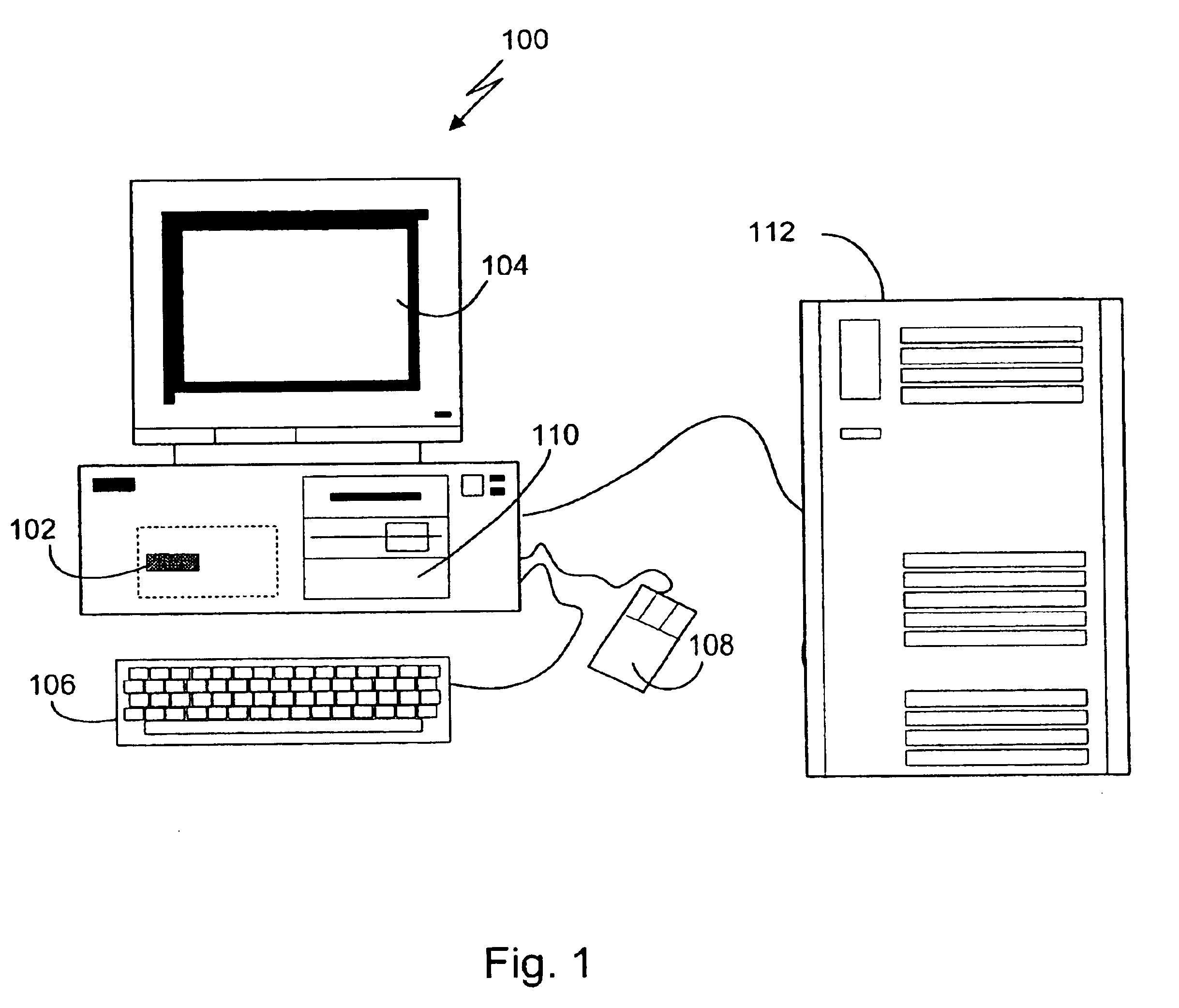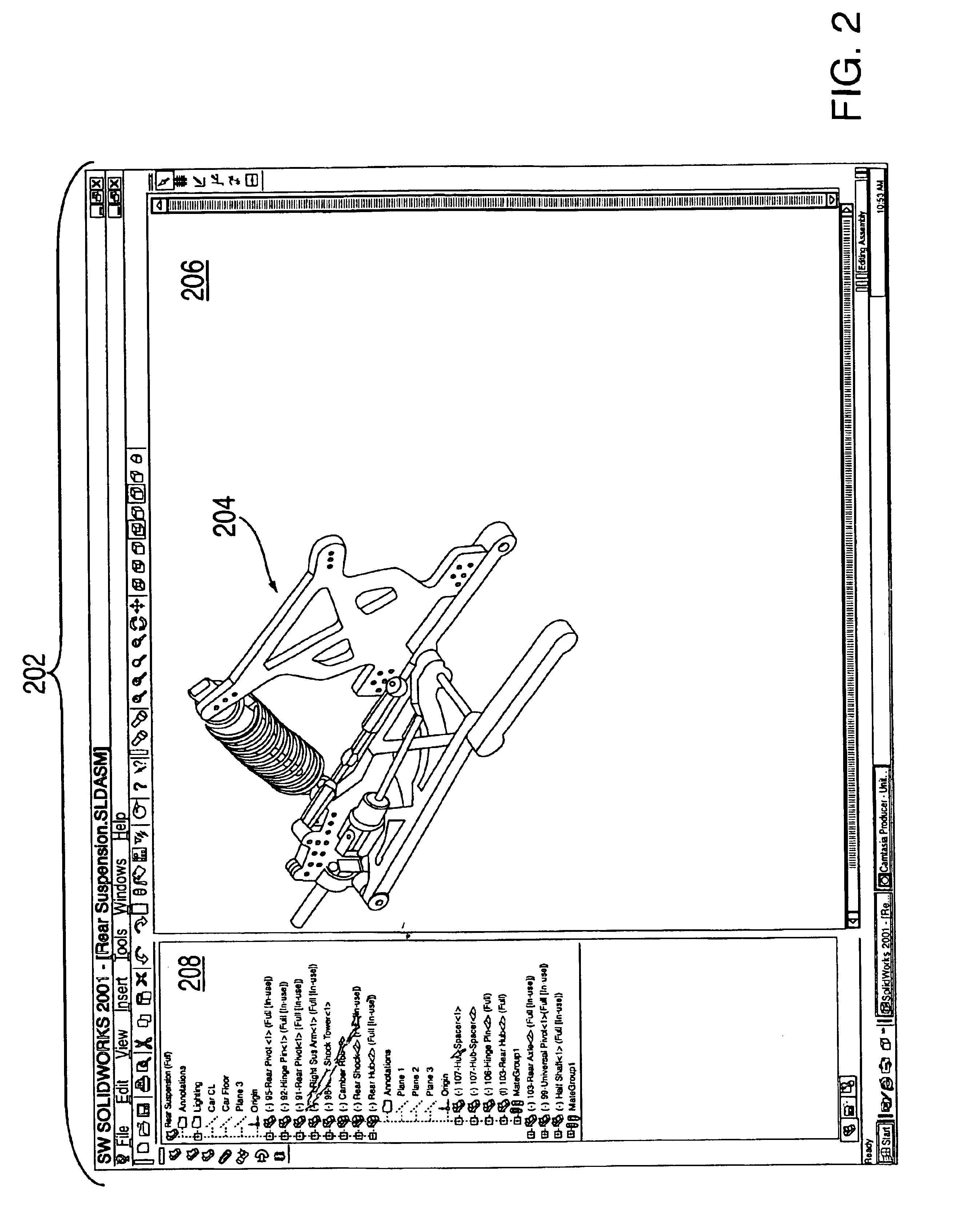Automated mirroring of components
a technology of components and mirroring, applied in the field of automatic mirroring of components, can solve the problems of inability to create a truly incorrect material bill generation, and inability to produce a true mirrored part in the context of an assembly
- Summary
- Abstract
- Description
- Claims
- Application Information
AI Technical Summary
Benefits of technology
Problems solved by technology
Method used
Image
Examples
Embodiment Construction
The present invention automatically creates mirrored components (i.e., parts and subassemblies). Mirrored components may consist of replicated components, truly mirrored components, or combinations thereof. The design engineer may select which components to re-use in an assembly and may specify whether to create a replicated component or a truly mirrored component for each original component selected. Additionally, the present invention may automatically determine from which components to create replicated components and from which components to create truly mirrored components, without user intervention.
The present invention automatically copies and positions a replicated component in such a way that the location of the replicated component is symmetric to the location of the original component; whereas, a truly mirrored component is reflected about a plane of symmetry and takes the form of a left-hand version of a right-hand component. The present invention also preserves the hier...
PUM
 Login to View More
Login to View More Abstract
Description
Claims
Application Information
 Login to View More
Login to View More - R&D
- Intellectual Property
- Life Sciences
- Materials
- Tech Scout
- Unparalleled Data Quality
- Higher Quality Content
- 60% Fewer Hallucinations
Browse by: Latest US Patents, China's latest patents, Technical Efficacy Thesaurus, Application Domain, Technology Topic, Popular Technical Reports.
© 2025 PatSnap. All rights reserved.Legal|Privacy policy|Modern Slavery Act Transparency Statement|Sitemap|About US| Contact US: help@patsnap.com



